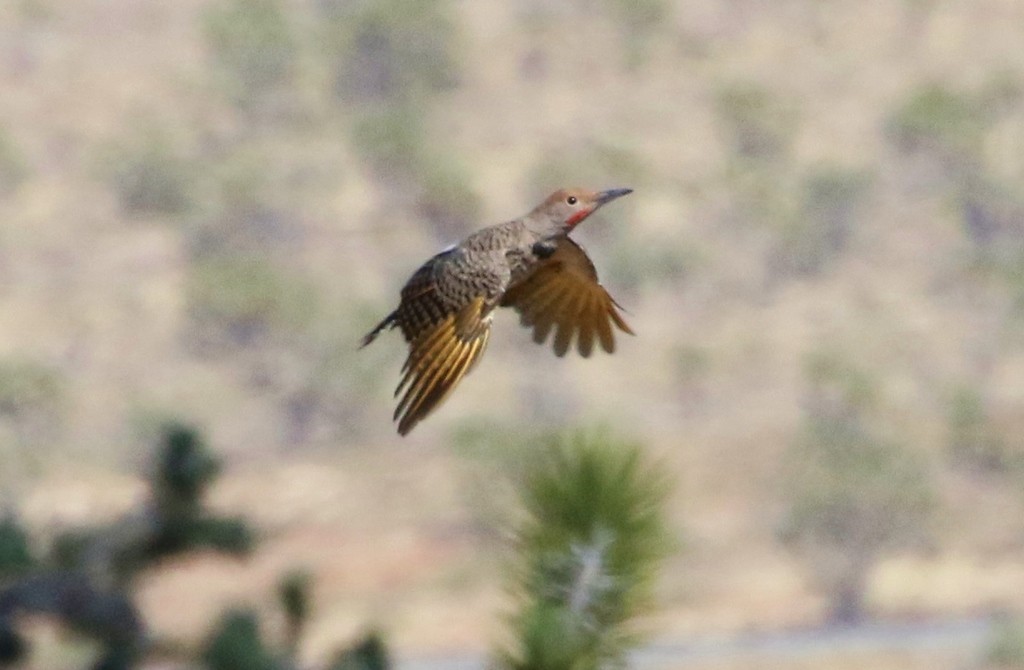Gilded Flicker
A species of Flickers Scientific name : Colaptes chrysoides Genus : Flickers
Gilded Flicker, A species of Flickers
Botanical name: Colaptes chrysoides
Genus: Flickers
Content
Description General Info
 Photo By silversea_starsong , used under CC-BY-NC-4.0 /Cropped and compressed from original
Photo By silversea_starsong , used under CC-BY-NC-4.0 /Cropped and compressed from original Description
The gilded flicker (Colaptes chrysoides) is a large-sized woodpecker (mean length of 29 cm (11 in)) of the Sonoran, Yuma, and eastern Colorado Desert regions of the southwestern United States and northwestern Mexico, including all of Baja California, except the extreme northwestern region. Golden-yellow underwings distinguish the gilded flicker from the northern flicker found within the same region, which has red underwings. 
Size
25-30 cm (10-12 in)
Colors
Brown
Black
Yellow
Red
Gray
White
Life Expectancy
6 years
Nest Placement
Cavity
Clutch Size
4 - 5 eggs
Feeding Habits
Gilded Flicker primarily consume ants, their larvae, beetles, and other insects, often foraging for hours at ant colonies. They adapt their diet seasonally to include seeds and fruits, particularly cactus fruits, when insect availability is low in the winter.
Habitat
Gilded Flicker primarily thrives in arid or semiarid environments, favoring the Sonoran Desert. Crucial to their habitat are the large cacti, notably the saguaro and cardon, which provide nesting sites. They are found at altitudes ranging from 200 to 3,200 feet, occasionally even up to 4,600 feet. The climate within this range is typically hot and dry, supporting a vegetation type comprised mainly of desert scrub. Gilded Flicker shows a strong preference for nesting in the higher elevations of these giant cacti, although some may also nest in riparian trees like willow or cottonwood.
Nest Behavior
Gilded Flicker engages in nest building in high, cactus-oriented cavities without additional materials. Parents exhibit no specific egg-laying patterns; both share in incubation and chick rearing duties.
Nest Characteristics
Gilded Flicker's nest is commonly found in giant cacti, less so in cottonwoods or willows, with an entrance hole of 2.8 inches and averaging 5 inches wide by 14.8 inches deep, unlined, around 20 feet up, often north-northwest facing.
Dite type
Insectivorous
General Info
Feeding Habits
Bird food type
Bird Feeder Type

Platform

Ground
Sounds
Call
Recording location: United States
Call
Recording location: United States
Behavior
The general behavior of gilded Flicker encompasses engaging in daily activities like foraging for food, primarily insects, and interacting with their arid to semi-arid habitats by nesting in cavities of cactus or trees. Gilded Flicker exhibits distinctive behaviors during mating; rival males showcase a ritualized 'fencing match' which includes dueling with bills and elaborate displays, especially when a potential mate is observing. These distinctive behaviors, characterized by complex visual and acoustic signals, reinforce social bonds and territorial claims. Pairs also perform similar displays to maintain their pair bond.
Species Status
Not globally threatened.